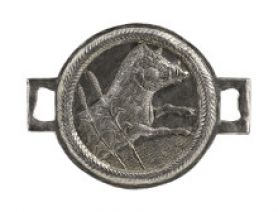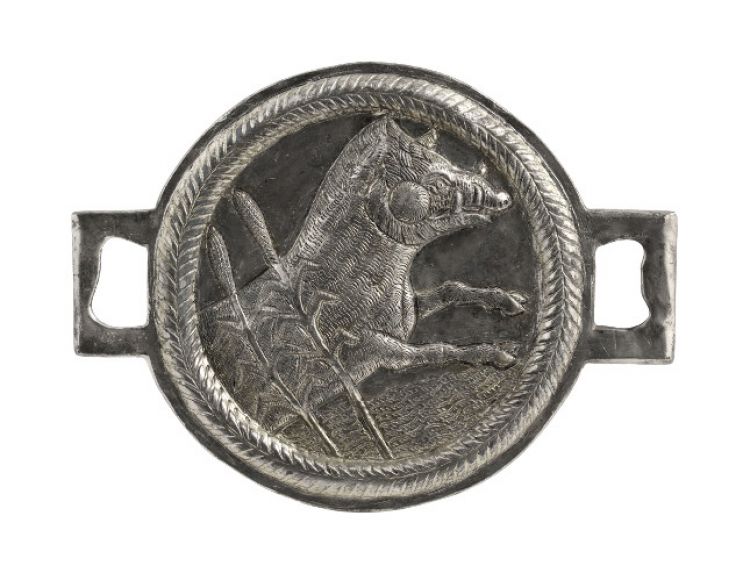Phalerae

These three phalerae, a kind of decorated circular plate, belong to an extensive set of objects discovered in 1930 during the construction of a house in Ittenheim. They were part of the funerary furniture of a Frankish warrior's rich tomb, which included a flagpole, bronze tableware and many other objects in silver and gilt bronze.
Two of the phalerae are edged with a plant frieze, each enclosing a naturalistic depiction of a boar half-emerging from a thicket of reeds bordering a swamp. One of the animals' heads is turned to the right, the other to the left. The treatment of the boar's coat, its tusks and its mane, indicates particular care and a great concern for accuracy.
The third phalera, fitted with a fastener, depicts a standing warrior seen from the front and wearing a helmet and armour. He leans on a spear with his right hand, while in his left hand he holds an oval shield placed at his feet. This figure has been interpreted as an allegory of Virtus, symbolising strength and courage.
These three objects of great artistic quality were honorary military insignia, probably part of a horse's parade harness and deposited in a 7th century AD princely burial.
